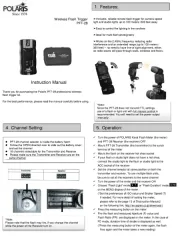Polaris 800 Pro-RMK 174 (2020) Manual
Læs gratis den danske manual til Polaris 800 Pro-RMK 174 (2020) (171 sider) i kategorien Ikke kategoriseret. Denne vejledning er vurderet som hjælpsom af 18 personer og har en gennemsnitlig bedømmelse på 4.7 stjerner ud af 9.5 anmeldelser.
Har du et spørgsmål om Polaris 800 Pro-RMK 174 (2020), eller vil du spørge andre brugere om produktet?

Produkt Specifikationer
| Mærke: | Polaris |
| Kategori: | Ikke kategoriseret |
| Model: | 800 Pro-RMK 174 (2020) |
Har du brug for hjælp?
Hvis du har brug for hjælp til Polaris 800 Pro-RMK 174 (2020) stil et spørgsmål nedenfor, og andre brugere vil svare dig
Ikke kategoriseret Polaris Manualer










Ikke kategoriseret Manualer
- Apogee
- Schmidt & Bender
- Hauppauge
- Dirt Devil
- Zenith
- Comica
- Esatto
- Consul
- Truetone
- Graco
- Mitsai
- Koss
- Digiquest
- Maestro
- Cudy
Nyeste Ikke kategoriseret Manualer









